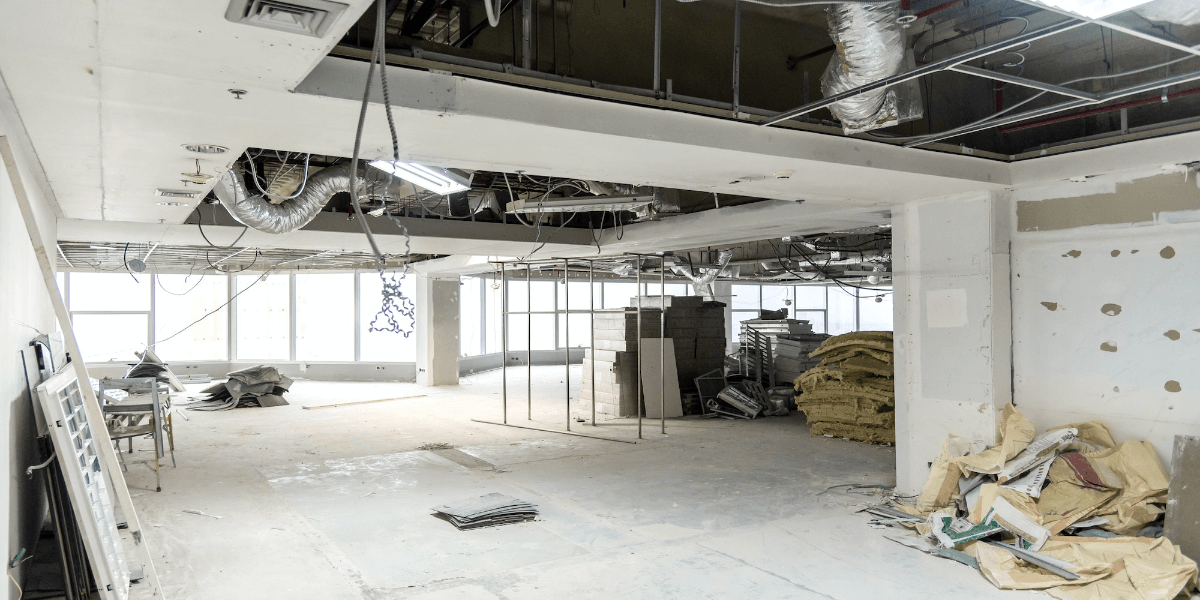The Tenant Improvement Allowance, get as much as you can and maintain control of the build-out process
A key component of any lease negotiation is the tenant improvement allowance provided by the landlord to build out or retrofit an office space for the tenant’s specific use. The amount of the tenant improvement allowance, as well as the length of the lease term, has a significant impact on the negotiated rental rate.
In addition to negotiating a favorable amount for tenant improvements provided by the Landlord, the ability to maintain control of the process is also important.
Tenant Improvement allowances provided by the building owner to build out or retrofit office space are typically structured in one of two ways:
- Turnkey Build-out: in this structure, the Landlord covers all of the cost of the tenant build-out as part of the agreed-upon rent and space plan generally outlining the scope of construction.
- Stated Dollar Amount: in this structure the Landlord provides a stated dollar amount for the tenant to use toward building out the space, often to include architectural and engineering fees.
When negotiating a lease, tenants would prefer not to come out of pocket for expenses related to building out the space. Many tenant rep brokers will often state their client wants a “turn-key” buildout, but what they technically should strive for is to eliminate or minimize “out of pocket” costs for the tenant, as well as maximize the value of the improvement allowance, based on the rental rate that is negotiated.
The Problem with the Turn-Key Approach
The inherent issue with the turnkey build-out approach is that the Landlord is going to incorporate a significant amount of contingency cost into the construction cost estimates to prevent actual costs from exceeding the estimate. This could be a contingency of as much as 25-30 percent, in effect creating the potential for another profit center for the Landlord, if they efficiently manage the build-out costs. In some cases “efficiently manage” could be construed as “cutting corners”.
For example, if the Landlord estimates the cost of the build-out at $75.00 per square foot, and that is the allowance the negotiated rental rate is based upon, ultimately the Landlord is able to build out the space for $65.00 per square foot, then the tenant has in effect given up $10.00 per square foot that could have gone towards improvements to their premises.
Another issue with the turn-key approach is that the tenant is relinquishing control of the tenant improvement dollars being spent on their space. Unless the tenant negotiates an extensively detailed work letter based on a detailed set of full construction plans, it is not uncommon to have surprises in the build-out that do not favor the tenant.

Maintaining Control of the Construction Process
In most cases, I prefer negotiating a state dollar amount for the tenant improvement allowance and maintaining as much control as possible over the build-out process for the tenant. Office building owners will typically request a 3% – 5% project management fee in the contract if they manage the build-out process addition, I request that the Landlord either waive or reduce their construction management fee and allow the tenant to retain their own project manager to oversee the design and construction process. Should you successfully negotiate the right to retain your own project manager, the landlord will still likely request an oversight fee of 1% – 3% but an experienced tenant representative can be successful in negotiating this fee, mitigating your costs.
The objective is to shift control of the build-out from the Landlord to the Tenant which provides the ability to:
- Maintain quality control of the process and insure the construction is completed on time to prevent any holdover rent fees in the case of relocation
- “Value engineer” as well as let the tenant reap the benefit of competitively bidding the construction contract to ensure you get the most value out of your tenant improvement allowance.
If possible, it is also prudent to negotiate the right to amortize additional tenant improvement dollars into the rent should you decide to add additional improvements, or upgrades or incur an unexpected cost that runs over budget before your space is completed. You may elect to just to pay any costs over the allowance yourself, but it is nice to have that option.
In cases, where the scope of work only involves new carpet, painting, or moving a couple of walls, having more control of the process is not as critical. However, in any significant interior construction job, I highly recommend retaining your own project manager, who will typically capture savings that benefit the tenant rather than the landlord that far exceed the fee charged by the project manager.
Choosing the stated improvement allowance approach requires more up-front work by your real estate team to ensure the proper allowance is negotiated, but maintaining control of the construction process allows the tenant to realize the benefits of potential cost savings and maximize the value of their improvement allowance.





